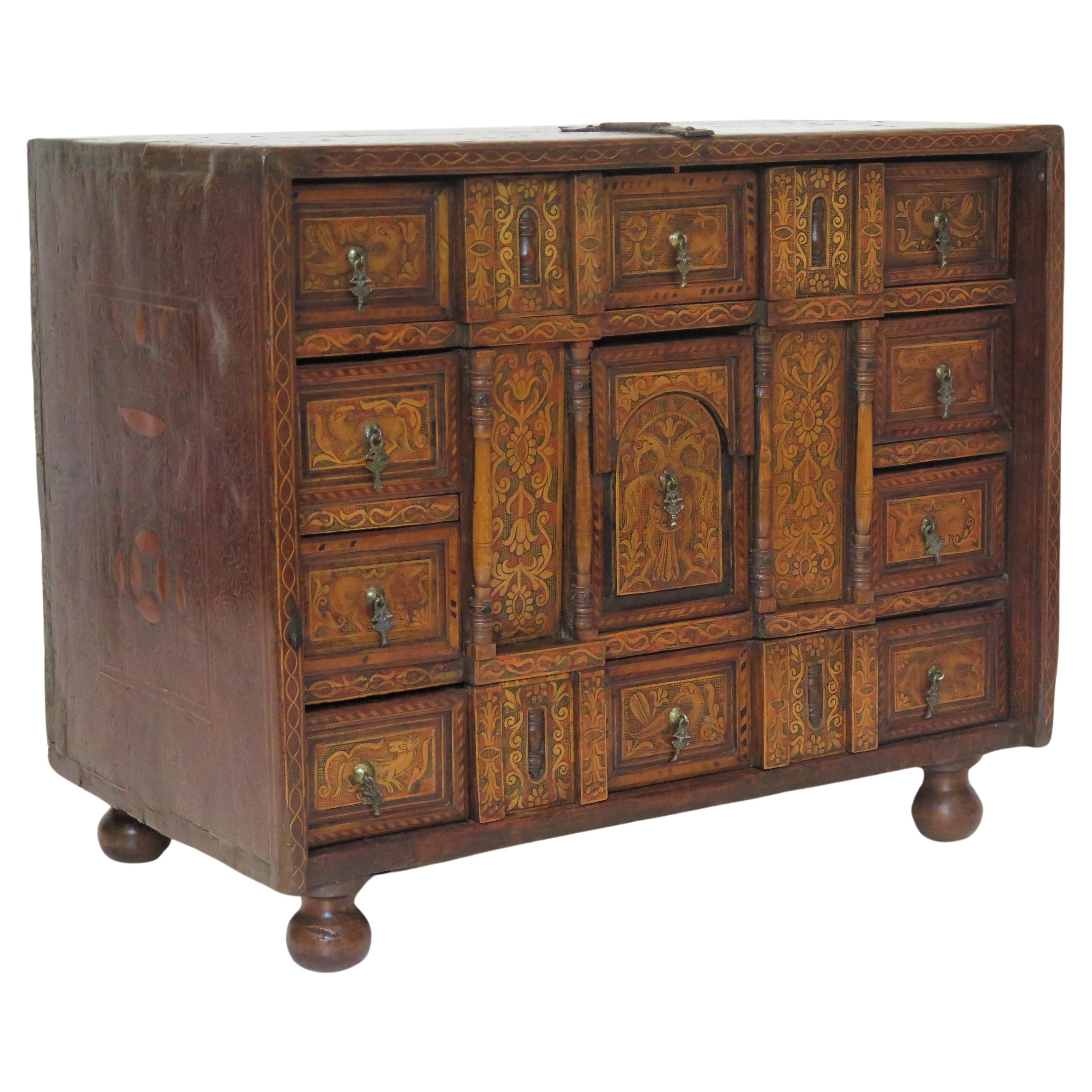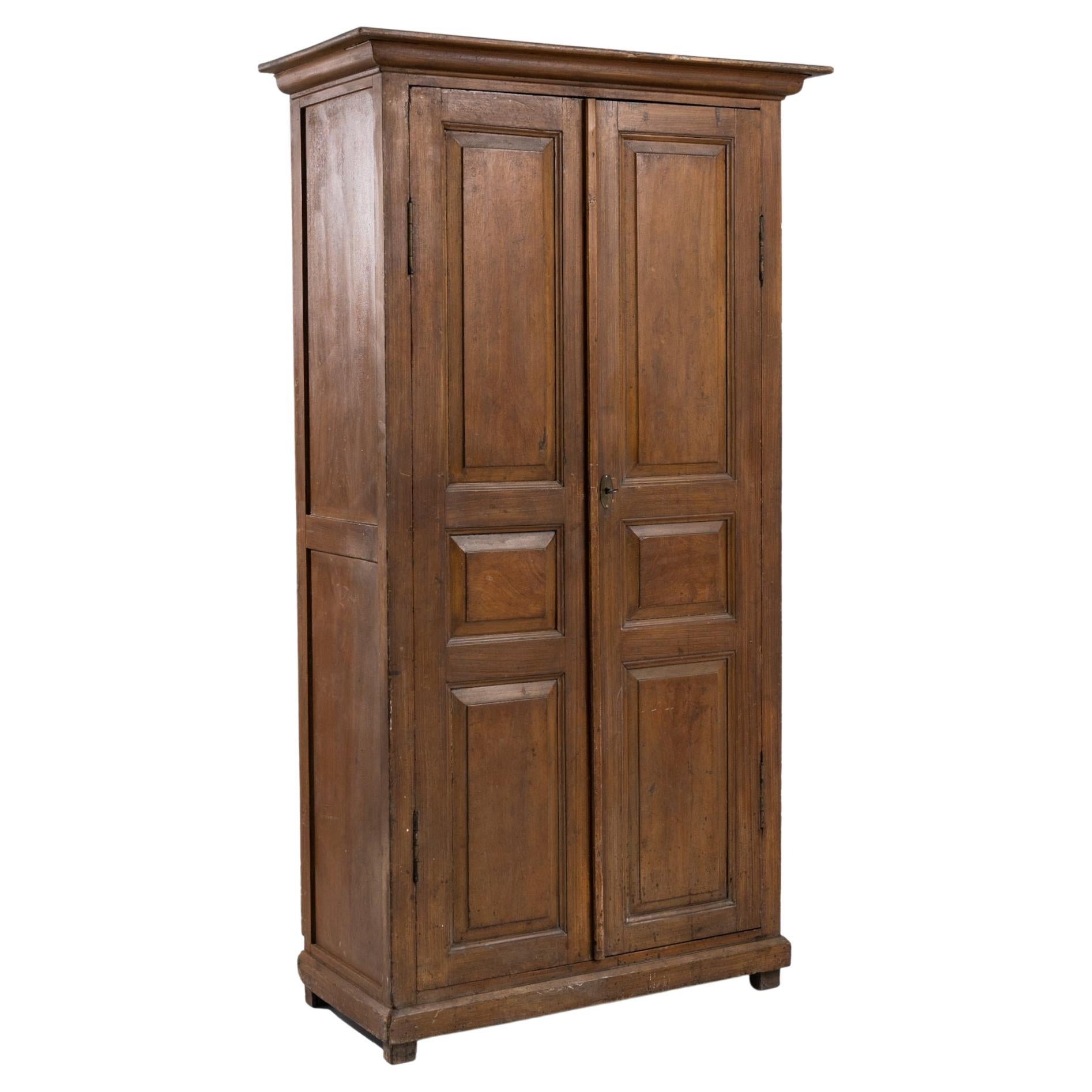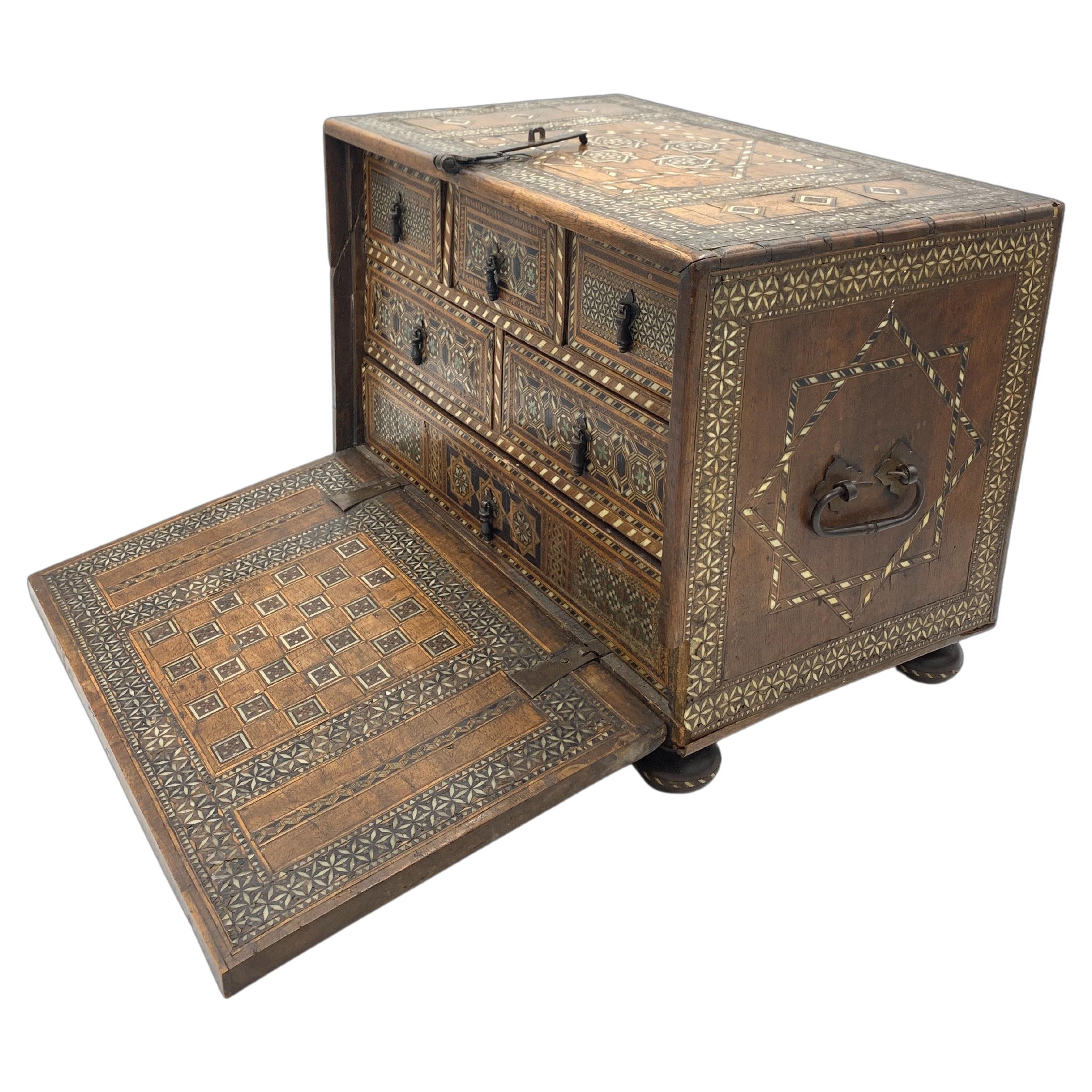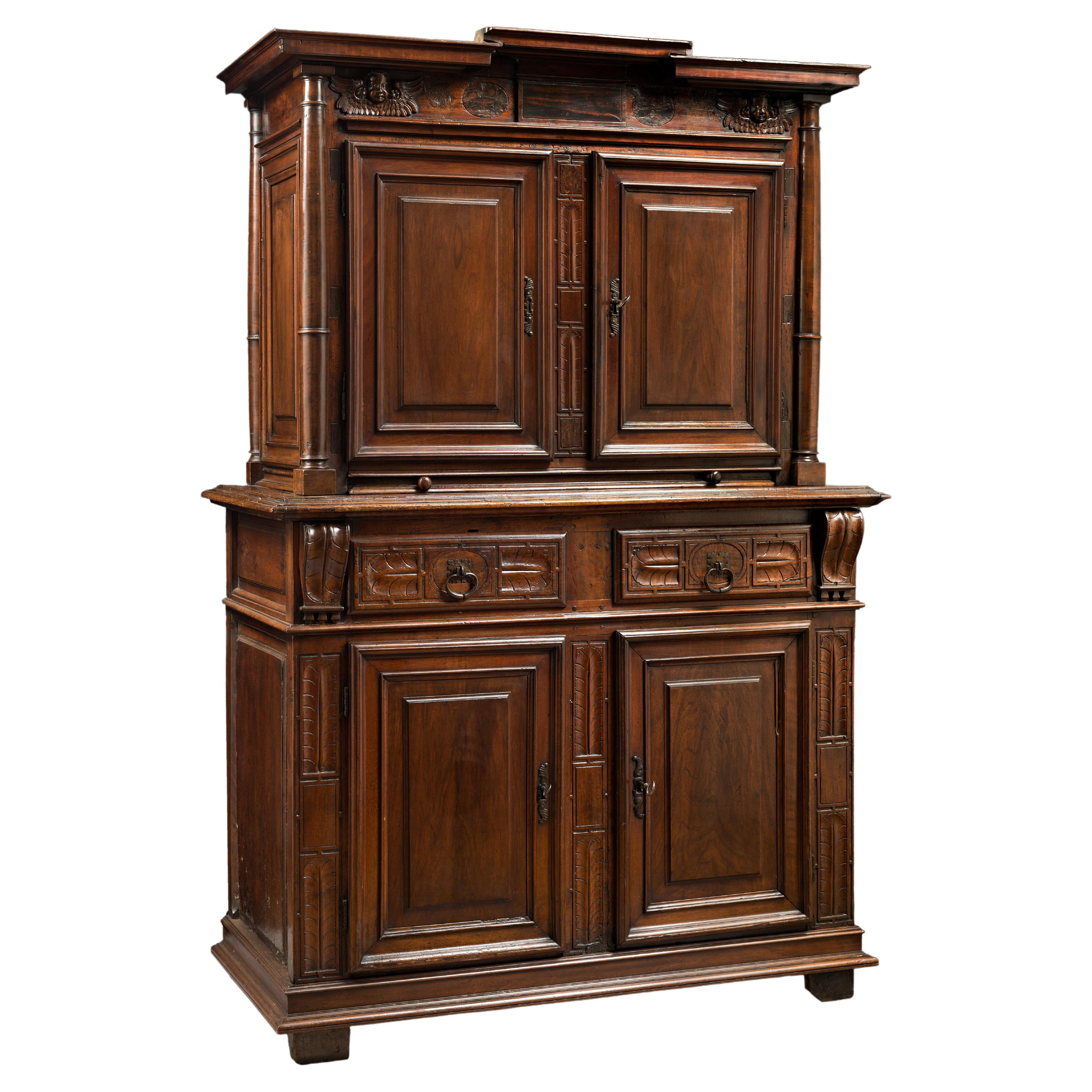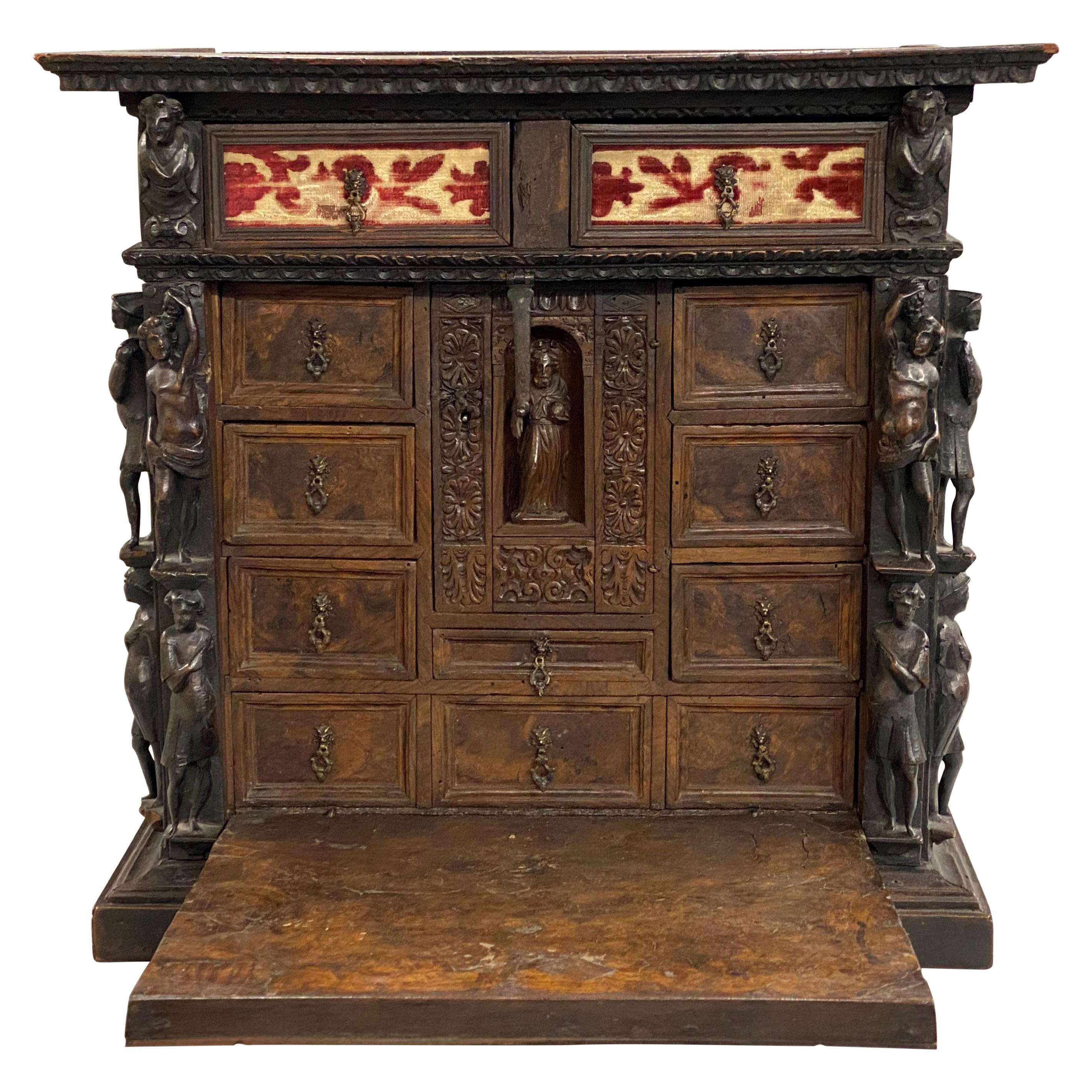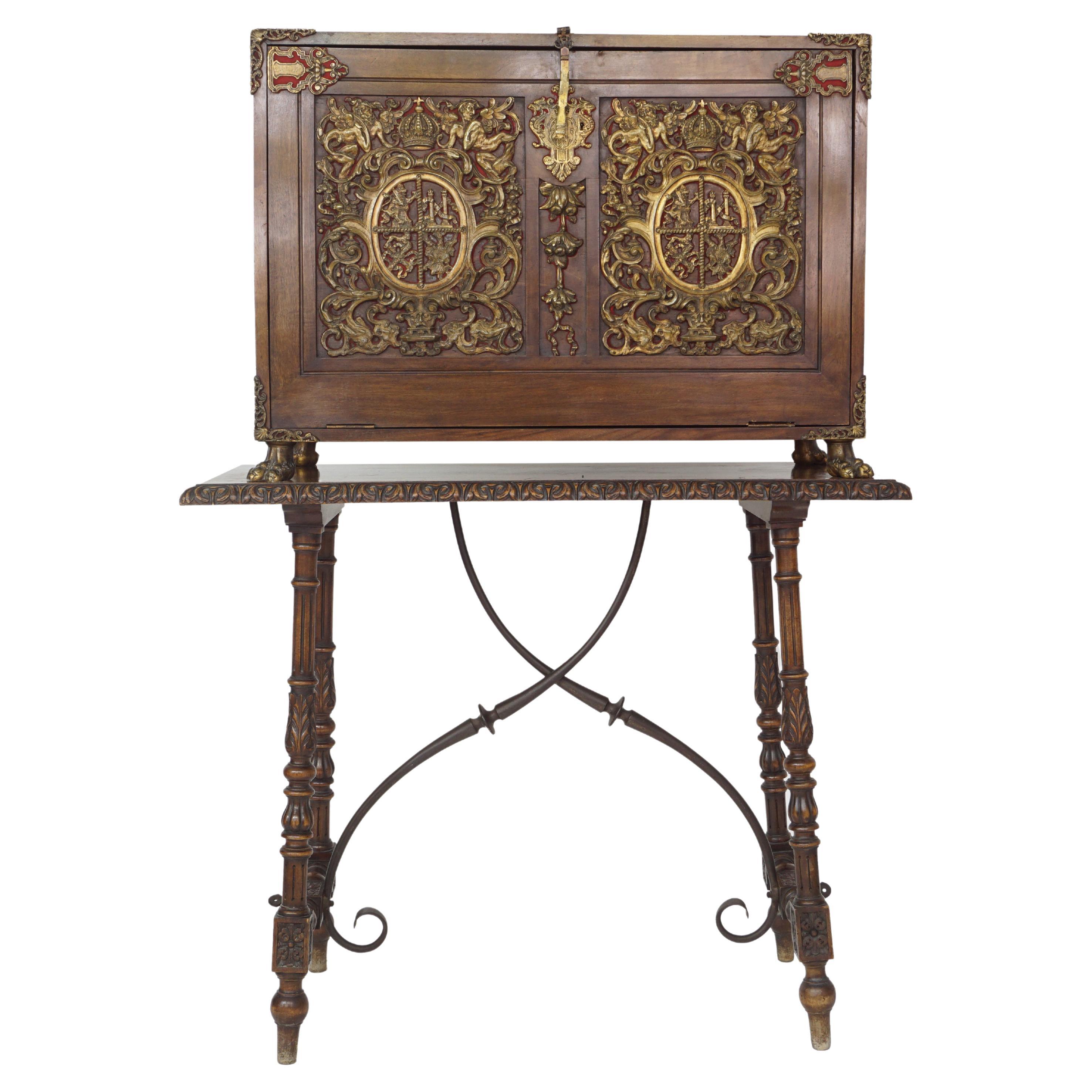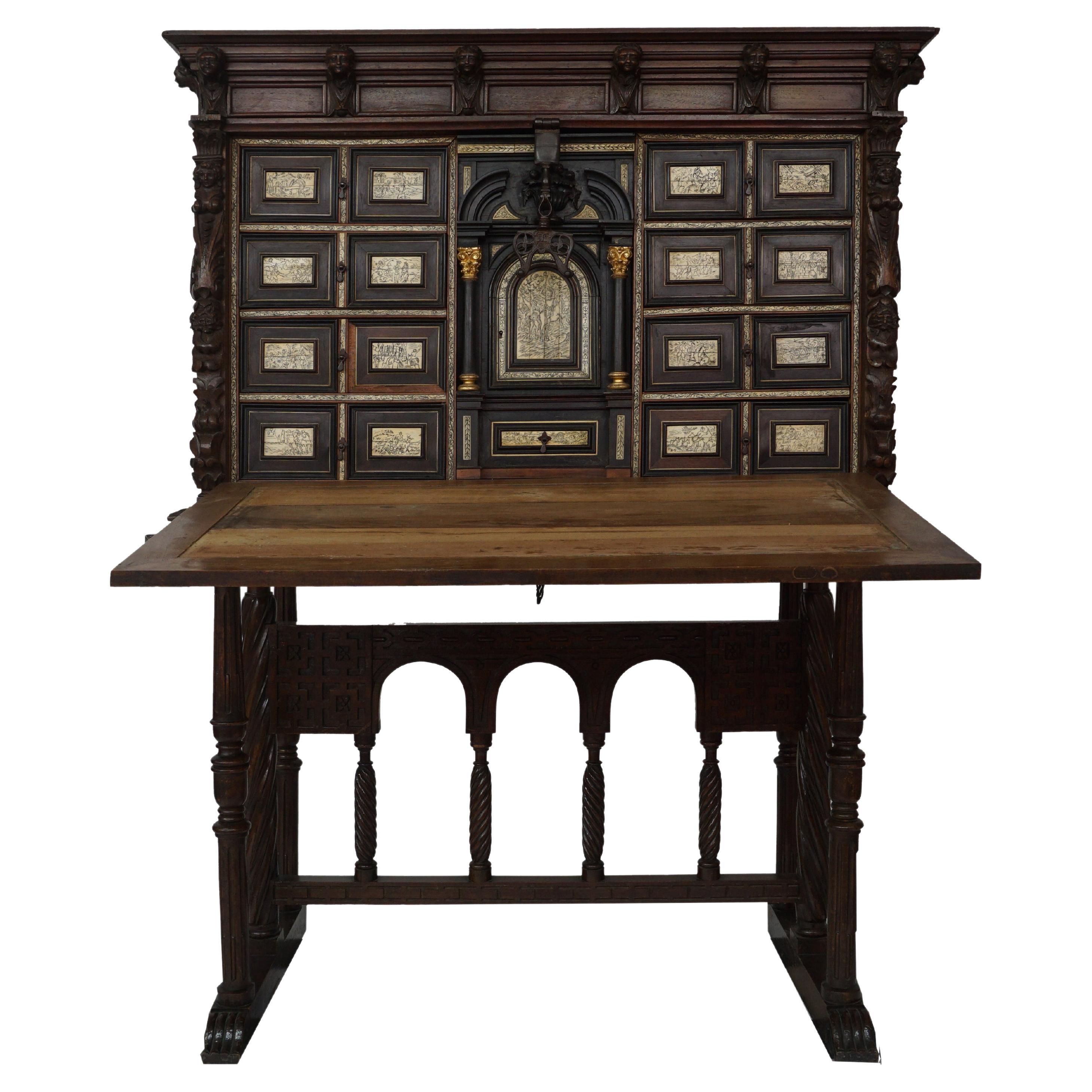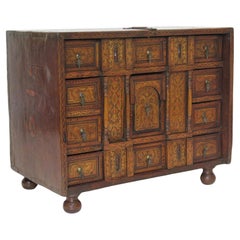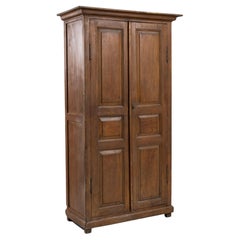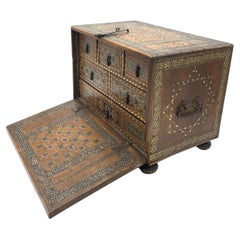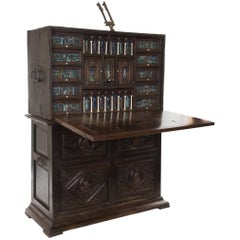
16th Century Spanish Vargueño Cabinet with Limoges Enamel Drawer Fronts
View Similar Items
1 of 12
16th Century Spanish Vargueño Cabinet with Limoges Enamel Drawer Fronts
About the Item
- Dimensions:Height: 60 in (152.4 cm)Width: 42 in (106.68 cm)Depth: 21 in (53.34 cm)
- Materials and Techniques:
- Place of Origin:
- Period:
- Date of Manufacture:c. 1550
- Condition:Wear consistent with age and use.
- Seller Location:Salt Lake City, UT
- Reference Number:1stDibs: LU1001710602531
You May Also Like
- 17th Century Spanish VargueñoLocated in Dallas, TXa 17th century Spanish vargueño / traveling cabinet with intricately inlaid top, sides, and small drawers, fruitwood, Italy, 17th centuryCategory
Antique 17th Century Italian Renaissance Cabinets
MaterialsFruitwood
- 16th Century Portuguese Wooden CabinetLocated in High Point, NCHandsome and dignified, this antique Provincial cabinet combines understated simplicity with a beautiful auburn finish. Made in Portugal in the 16th century, paneled doors unlock wit...Category
Antique 16th Century Portuguese Country Cabinets
MaterialsWood
- Nasrid or Post-Nasrid Wood Cabinet, Spain, 15th/16th CenturyLocated in London, GBA fine nasrid or post-nasrid fall-front wooden cabinet Spain, late 15th/16th century on four squat bulbous feet, of rectangular form, the front and top inlaid with eight-pointed star...Category
Antique 16th Century Spanish Cabinets
MaterialsWood
$76,335 Sale Price20% Off - 16th Century Spanish Walnut and Boxwood Table Cabinet, Circa 1580Located in Brugge, BEAn exceptional 16th Century Spanish walnut and boxwood table cabinet from Catalonia, also known as an arquilla. The fall is richly inlaid with bone, creating a decorative scene of tw...Category
Antique 16th Century Baroque Cabinets
MaterialsBoxwood, Walnut
- 16th Century French Walnut Cabinet with Marble InlaysLocated in Saint-Ouen, FROn the left post of the lower body, is written the date 1596 in a cartouche This cabinet has two bodies. The upper part, set back, is moulded and carved. At the bottom, the cabine...Category
Antique 16th Century French Renaissance Cabinets
MaterialsWalnut
- 16th Century Renaissance Two-Bodied CabinetLocated in Saint-Ouen, FRFormer collection Altounian At the beginning of the reign of Henri II (1547-1559) the furniture’s ornamentation evolves. The few medieval motifs that were still used are eventually relinquished. Furniture becomes more sober showcasing moulded panels and perfect architecture. Cabinet-makers use ornaments such as curved fluted or plain columns, feather quills, roses or winged putti heads. High-relief carving becomes more scarce and compositions lighter. To that end cabinet-makers draw inspiration from Fontainebleau motifs filtering them and adapting them to French taste. During this period cabinet-makers turn into a kind of architects. Indeed the architectural balance of furniture is the centre of their concerns. The study of Antic formulas is then a necessity. From this care given to proportions appear refined cabinets with pure lines. This style is characteristic of the reign of Henri II and disappears soon after under the regency of Catherine de Medici (1560-1574) when an abundance of high and low-relief ornaments comes back on furnitures. This two-bodies cabinet...Category
Antique 16th Century French Renaissance Cabinets
MaterialsWalnut
Recently Viewed
View AllMore Ways To Browse
Antique Drawer Cabinet
Antique Drawer Storage
Two Drawer Cabinet
Cabinet Drawer Pulls
Antique Drawer Fronts
Carved Front Cabinet
Cabinet On Stand
Cabinets On Stands
Open Front Storage
Antique Cabinet On Stand
Antique Cabinet Pulls Drawer Pulls
Antique Cabinet Drawer Pulls
Antique Bar Front
Hand Drawer Pulls
Enameled Panel
Spanish Cabinet
Cabinet Spanish Spain
Carved Enamel
